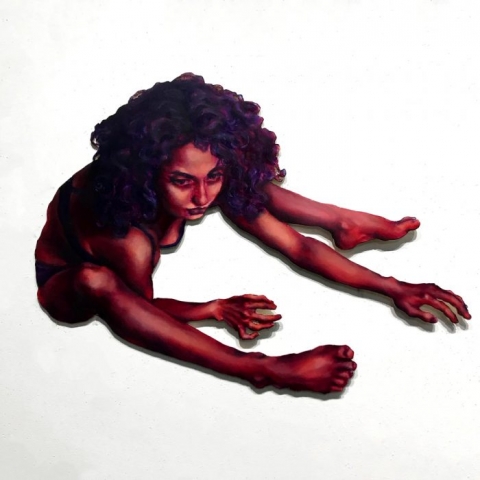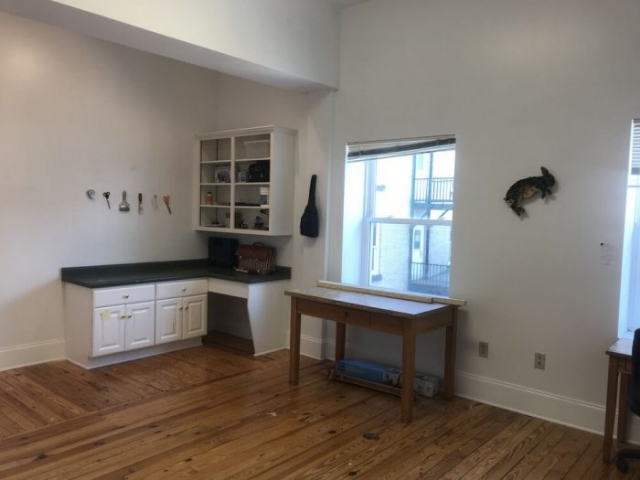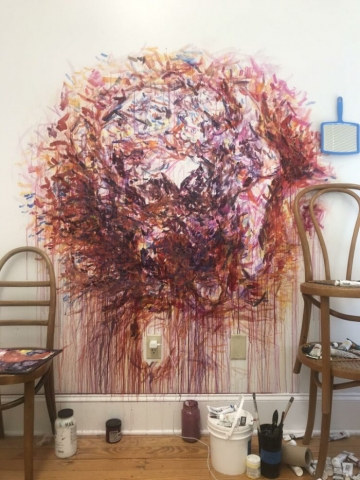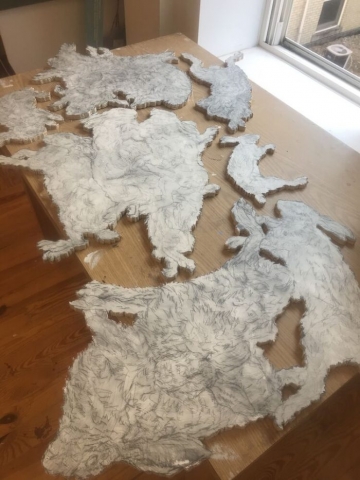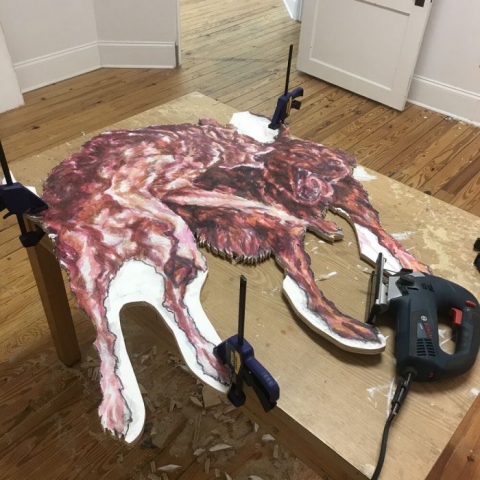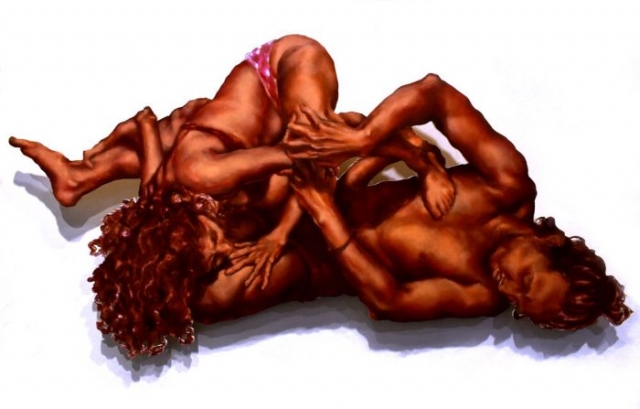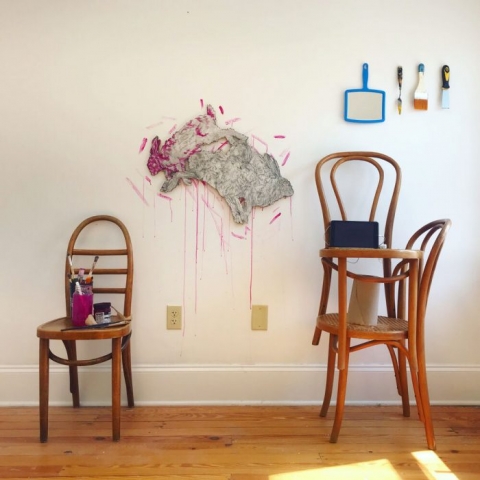
B20: Wiregrass Biennial showcases the region’s most talented contemporary artists, illustrating the South’s rich cultural heritage. The juried exhibition encourages innovative and progressive work that utilizes a variety of art forms and media and will feature paintings, sculptures as well as mixed media, new media and installation art. This year’s show features thirty-nine artists from eleven states.
B20 Artist Interview with Mär Martinez
B20: Wiregrass Biennial is a juried exhibition that encourages innovative and progressive work and showcases the South’s most talented contemporary artists, illustrating the region’s rich cultural heritage. Selected work utilizes a variety of art forms and media, including paintings, sculptures, mixed media, new media, and installation art. Three jurors chose from a field of over 130 entries for this year’s exhibition — the first virtual exhibition ever for WMA — featuring 39 artists from 11 states.
We’ll be sharing a series of interviews with B20 artists during the run of the exhibition, and our first is from Orlando, Florida-based artist Mär Martinez.

Where do you find inspiration for your artistic practice?
My work explores structural power dynamics that breed dominance and aggression based on gender, ethnicity, and sexual identity within our society. It is currently situated in various forms of psychosexual control, but recently my interests are shifting towards language and ritual within the greater realm of power dynamics. Artists like Laura Krifta, Rae Klien, Shirin Neshat, Laurie Anderson, Adrian Piper, Kyle Dunn and Arcmanoro Niles are just a few of my reference points. It’s so important to study contemporary art to stay visually informed and pay attention to narratives that have been often ignored in the annals of history. During the shut-down I’ve missed museums the most.
Inspiration can be found outside of galleries and museums as well; I make an effort to pursue other passions and use those experiences to inform my artistic practice.
Read–this quarantine I’ve had the privilege to read my heart out! It’s refreshing to escape the echoing chamber of your mind and vicariously inhabit the fleshed-out universe of another through storytelling. It’s an undeniable way to renegotiate your own relationship with your work. Some of the books that have really stuck with me from the summer have been: The Alphabet Versus the Goddess by Leonard Shlain, In the Dream House by Carmen Maria Machado, Weather by Jenny Offil, Wow, No Thank You by Samantha Irby, and Brief Interviews with Hideous Men by David Foster Wallace.
Will you continue to explore the use of shadow as part of your practice? Is this a technique you commonly employ?
I love the sculptural possibilities that are presented by breaking away from the traditional confines of the canvas. By physically cutting out my work the paintings become objects; the shadow is an essential element. Not only does it reference the vulnerability of the work—the pieces become naked in the outside world—but it also adds a conceptual layer of depth. The shadows can be manipulated depending on how a piece is lit. A very small form can possess the presence to fill up an entire room through shadow. This plays with the idea of how one can occupy and take up space, regardless of their physical form. This is useful in work that is about dominion vs. domination; the shadows can be cast to display a dominion of the self that can only be accessed through internal strength.
How have recent social movements like the #MeToo movement, intended to flip typical power structures, affected your work?
I grew up during the #MeToo movement, and although it was an imperative step forward, it is only the beginning. It was inspiring watching women and men take back their power. It’s a rebellion against systematic oppression that allows for gender-based violence. Although there’s so much more work that needs to be done, the cultural significance of #MeToo is undeniable. Patriarchy can be implemented and enforced by any gender, but we all become victims of the broken system in the end. The system perpetuates violence and even protects people that violate the sacred personal boundaries of others. Until there is real change and accountability in our country, there will be no safety in numbers.
My body of work began as first a resistance to culturally-enforced heteronormativity, and has evolved into a dialogue about the exploitative nature of unchecked power imbalances on a greater scale. The culturally enforced binary system of gender constrains self-expression and exacerbates violence. The psycho-sexual struggle for power transcends humans and is fueled by an animalistic drive for control and autonomy. My work addresses themes of consent as well as power; Scission implies a nonconsensual departure by being forcibly cut out. The hand-cutting of the pieces is a crucial part of my process. The violent act of stripping figures from their context mimics how power can be given and taken away. The figures become vulnerable, naked objects in the outside world.
You work in multiple mediums. Do you find yourself gravitating to one medium more than the others? If so why do you think that is and if not, how do you balance working in multiple mediums?
Interdisciplinary integration of diverse artistic practices is necessary in a contemporary world. I’m a sucker for the most over-painted genre: figurative art. It’s all been done before! I could paint oil nudes all day long. Shifting mediums and combining techniques has been an effective way to provide a unique perspective on an ancient practice.
It’s freeing to be able to flit in and out of mediums. We live in a time where there truly are no rules in art, and I’m fascinated by work that transcends definition. Painting is my first love and I’d consider that medium my favorite place to rest. My current body of work straddles sculpture and painting. I’m attempting to push the sculptural aspect of my work by pushing outward into the 3-D realm. In my studio I am incorporating higher levels of relief and experimenting with interactive soft sculptural painting.
I find it refreshing to put one medium on hold and pick up another—it’s a great reset. I’ve been exploring performance and installation art and am combining those elements into my current body of work. I also serve as co-director of Tabula Rasa, a collaborative arts partnership with Leo Cordovi. We are in the works on a large public installation at the moment! Tabula Rasa also houses a small screen printing production. I deeply enjoy ceramics but view my participation in it as more of a meditative practice. I alternate between traditional drawing and digital illustration. It’s important to satisfy a creative need, and switching mediums gives a fresh perspective and allows another part of your brain to take over in the process.
How does living and working in the South impact your work?
The cultural climate here is very strange! I am based in Orlando, FL. Orlando is an extremely progressive and liberal city that, for the most part, celebrates diversity. Experience shapes art, always. I’ve had a multitude of opportunities and support come my way because of my geographical proximity to my university and the city’s many funded projects. Orlando’s art administration workers put their all into raising funds to support artists, especially during these rough times. Many of the venues stand by and support their emerging artists and are efficient with their allocation of funds. I’m impressed with their ability to weather the COVID storm.
Orlando has a very diverse population, and this impacts the city’s artistic output. I’m thankful to be able to engage with narratives that are outside my own experience and share my own. As an Arab-American artist, I feel safe and welcome here.
It would be a mistake to discount the climate’s effect on lifestyle here. It’s sunny all year round, excluding hurricane season. Creatively I benefit so much by being able to disappear into the natural parks at any time. Having the ability to escape into the trees at any time is so significant; the meditative sanctuary of nature is a huge reprieve from daily life, and that solitude helps me formulate my thoughts. Being able to go camping or take a hike with a few friends is always a go-to for me when I’m struggling with a painting or elaborating on a challenging new concept.
Is there anything new you are working on that you’d like to share with us?
My solo exhibition, Illusions of Safety, is opening July 30th at the Clark Gallery in Indiana, PA! The work was completed during a residency. I’m also excited to announce that this month I was accepted as a Jewish Art Salon Student Fellow. I am graduating with a BFA in Studio Art and a BA in Art History at the University of Central Florida this winter. There are a lot of projects in the works but they are camera shy at the moment. You can check out updates on upcoming projects at @meatvoid on Instagram or at www.marmartinezart.com!

